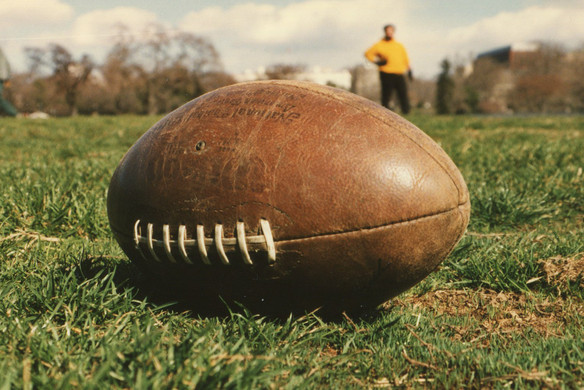Table of contents
The Super Bowl is one of the last events that truly draws a mass audience. It’s part of the reason that those TV ads during the game are so expensive.
2 screens for the Big Game
But here’s the thing: Second-screen experiences — like when you look at Twitter on your phone when a penalty is called — are becoming increasingly common. Last year, a survey from Salesforce found that 73 percent of big-game viewers planned to use at least one device in addition to a TV during the game.
And what are they doing on those second screens during the game? According to a new survey from Adweek and Survata, they are probably on Facebook.
The survey, which polled people aged 18 to 54, found that 49 percent of respondents thought they were likely to be on Facebook while watching the game. Not exactly shocking since Facebook is the most popular social platform in the world, with 1.65 billion monthly active users.

Graphs taken from an infographic produced by Adweek
What’s slightly more surprising is that over half of the 1,000 people surveyed also thought that they would consume the most game-related content on Facebook (as opposed to other digital platforms).
Big Game ads viewed on Facebook
The most popular type of big-game content is the ads themselves; long term, most of the viewership of those ads happens on YouTube. But since Facebook invested heavily in video, we’ve seen that viewership of big-game ads during the game — and immediately before and after — is happening more and more on Facebook. (This has to do with how much brands are promoting that content on the platform, in addition to the nature of Facebook’s News Feed, which gives precedence to video and trending content.)
All of this is to say that if you can’t part with $5 million for 30 seconds of airtime (and there are very few companies that can), there are still plenty of opportunities for your business to capitalize on all the big-game buzz — online.
And it’s not just about Facebook. Look at those graphs again. Plenty of viewers will be on other social platforms during the game, too. And many of them will be on more than one platform.
“It’s not a matter of Snapchat versus Facebook or YouTube versus Twitter as much as it is about Snapchat and Facebook and YouTube and Twitter being the primary places where people are sharing, engaging, and communally experiencing the events unfolding in front of them on their other screen — the TV,” Chris Mellow, director of digital and engagement at agency Grupo Gallegos, told Adweek.
So if your business is throwing a game-day party or offering a promotion, or if your customers just seem excited about the game, make sure you’re utilizing social platforms to interact with them.
If you’re not sure where to start, here are a few tips to put together your big-game social media.
Tips for posting during the Big Game
-
Put goals first. Any time you use social media, you should have a business goal in mind. Are you trying to promote a product, looking to create awareness, offering a special promotion? Make sure you keep your goal in mind when you’re determining which platform(s) to use and what content to create.
-
Choose your platforms wisely. You want to use platforms that are familiar to you and your customers. (You shouldn’t start an account on Snapchat, for instance, just for the game. ) But don’t feel pressured to use all your platforms; just use those that get great engagement and deliver against your goals.
-
Create unique content for each platform. Each social platform has strengths and weaknesses. While you might use Facebook or Instagram to drive awareness, Twitter and Snapchat are great for responding rapidly to the game, other brands, or whatever else may be trending. Think Oreo’s infamous 2013 game tweet, which was retweeted 10,000 times in an hour, according to Ad Age. Just remember that the content you produce should be an extension of the game experience — you’re not the main show.
> Power out? No problem. [pic.twitter.com/dnQ7pOgC][5] > {: lang=”en” dir=”ltr”} > > — Oreo Cookie (@Oreo) [February 4, 2013][6] {: .twitter-tweet data-lang=”en”}
-
Make sure that content is targeted. Half the battle of creating content (or maybe more) is making sure that it gets in front of the right people. If you’re running an in-store game-day promotion on Facebook, you want to target the posts to your local area so that you reach people who can take advantage of the offer. If you’re tweeting during the game, you want to make sure you use all the applicable hashtags so people interested in the big game might see your tweets.
-
Just be you. There’s so much amazing content put out during the big game that it’s easy to get caught up and want to go big. But don’t try to be too clever. If you try out comedy, but you’re not usually funny on social media, your followers will notice (and not in a good way). For the best results, just be you.
Photo credit: “01.Football.Ellipse.WDC.3March1996” by Elvert Barnes, Flickr, CC by 2.0
![]()











